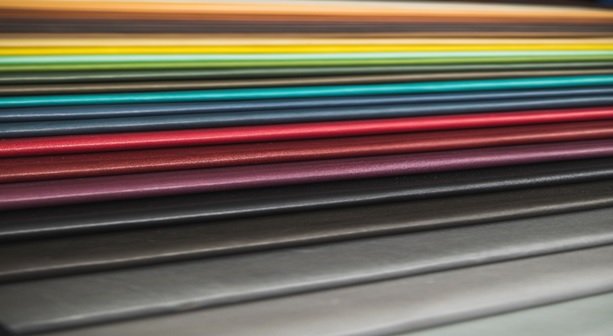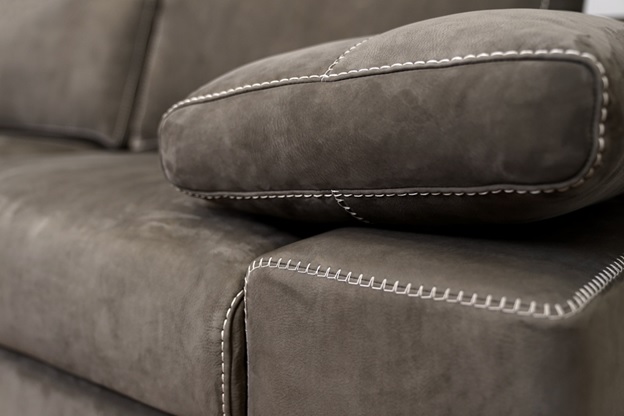About Leather
The leather industry is creating a product that is both natural and long-lasting making leather unique in its ability to combine beauty, comfort and practicality. Hides and skins are mostly a by-product that is dependent on the meat and dairy industry. Transformation into leather is the best use for those hides, properly made and sourced, leather is therefore a sustainable material.

Given the extensive range of raw materials with different properties, and the many processes developed over time, leather making is highly versatile and leather manufacturers can produce qualities with widely varied properties and looks.
Leather is a natural by-product
For centuries leather has contributed to the quality of our everyday lives and today is used in everything from children’s shoes to aircraft seats. Today, the global leather market is a $20 to $22 billion dollar market. Approximately 50% of all leather produced is used in the manufacturing of footwear, 15% in the automotive industry, 12% in upholstery, 8% in garment, 5% in gloves, with the remaining 10% in various industries.
Leather is a renewable natural resource which, if not produced, would have to be replaced by synthetic materials derived from non-renewable resources. For its raw materials, the tanning industry is entirely dependent on cattle hides, sheep skins, as well as a small number of goat and other skins; which if not processed into leather, would create an enormous waste disposal problem and accompanying health hazards.
For the tannery, raw material quality is of prime concern the world over as the raw hides and skins represent 50% to 60% of the cost of producing a piece of leather. A tannery’s efficiency and profitability depends, in large part on:
- The quality of the raw materials it sources, which in turn determines the quality of leather it can produce.
- However, the quality of the hides cannot truly be fully assessed until after the hair or wool has been removed, and after the completion of the tanning process when the hide has been turned into leather.
- The ultimate value of the hide depends on the leather’s end use, and as such, many companies in the leather industry for competitive reasons, specialize in producing specific types of leather.
Leather has many authenticities
The skills of the leather makers is key, with different qualities and aspect a good manufacturer can engineer leather into various items. Leather is durable enough for furniture yet soft enough for comfort footwear. It will make the finest dress gloves or protective, abrasion resistant motorcycling gloves. Leather makes the most supple of jackets or the firmest of walking boots.
But Like all natural products, leather is not always perfect. The quality of the hide or skin is largely related to:
- The amount of damage to the grain (or “outside”) surface. Meaning it will have a rich heritage, showing the history or rather life of the animal with every mark and grain of their hide.
- Damage may be due to skin parasites, related scratches, and husbandry practices on the farm or in transport of the live animal. These marks and scars in leather are characteristic of an authentic leather hide.
- Most types of damage can be reduced or avoided altogether by proper management of the animal or the hide.
- While most imperfections are typically removed from the finished hide, common types of markings that can still appear on the leather’s surface include: brand marks; insect bites; healed scratches and scars; stretch and vein marks; and wrinkles due to age.
- All of these natural differences in the animal’s hide create a truly unique look that adds to the aesthetic appeal to the leather.
- You should expect to see differences between each hide and find that this adds to the natural beauty and unique nature to the leather and should be viewed as markers of the authenticity and quality of your product.
Good leather ages well and lasts
Leather is one of the oldest, most durable materials known to man. Some characteristics of leather material as whole:

- Leather is a natural by-product
- Well made leather lasts a long time and unlike most man-made, or synthetic materials, it gets better with age, acquiring a depth of patina and wear pattern, that is individual to the user – much like a favourite pair of jeans.
- It is extremely strong due to its 3-dimensional fiber weave structure, is resistant to tearing, and it takes more than 200 pounds of pressure to puncture leather-covered furniture.
- Most experts give leather an average life of four times that of textile products.
- By its nature, leather is not flammable. It is the only material that meets the high standards required by the FAA for airline seating without the addition of further flame resistant products.
- Leather does not cause allergies. All dust particles can be eliminated from leather, making it suitable for those people allergic to dust.
- Because it is a natural substance, leather breathes. Similar to a human’s skin, it maintains the temperature of the room and is porous, allowing it to absorb and evacuate moisture from its surface, as well as to allow air to move freely through it while vinyl and synthetic-back fabrics can trap air.
- Leather molds to a form, but will not stretch out of shape. Life a favorite pair of jeans, it conforms to the body shape and becomes more comfortable with each use. Only leather ages so gracefully, becoming more supple and beautiful throughout its years of use.
- Leather is easy to repair and maintain, leather is the easiest type of furniture to care for. It needs only occasional dusting/vacuuming or for a more through cleaning.
- You should clean leather every 3-4 months.
